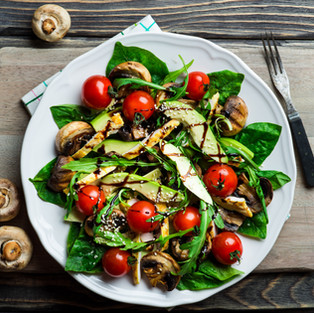Your diet choices are the foundation of your health and wellness
"Anti-Inflammatory diet" seems to be the new buzz word, but anti-inflammatory diets have been around for centuries. Prior to industrial agriculture, many cultures ate diets that were balanced and naturally anti-inflammatory. Prior to the industrialization of food production eating minimally processed, seasonal, wild-caught or foraged foods, and pasture-raised cattle was normal. Portion sizes were kept to the proper balance by how hard or how easy a food item was to obtain.
But with the industrialization of farming, certain crops (grains), and animal products became easier to produce (because they were raised on grains), making them a larger and larger portion of our diets through the ease of access and affordability. Unfortunately, ease of access didn't also translate into healthy in this case.
Farming turned grains into a stable when previously, grains were kept to survive times were other food items were limited or scarce because of seasonal changes such as winters or draughts. They provided the bare minimal nutritional content to survive and were never meant to become a year-round staple.
Most Grains have a high content of Omega 6 fatty acids that when our body breaks them down produce the build blocks for our body to enter inflammatory states easily. Inflammation is not inherently bad, we need inflammation to queue our immune response to prevent infections, but too much inflammation also known as systemic inflammation can cause chronic diseases.
Seasonal vegetables, fruits, mushrooms, and nuts generally have a low Omega 6 content and have a Higher Omega 3 content along with a higher concentration of micronutrients such as vitamins and minerals. (no need to fortify here) Omega 3 is known to reduce the occurrence of pro-inflammatory substances. Animals raised on a naturally diverse diet will also have a healthier fat ratio and produce products with a higher Omega 3 content.
Most traditional diets ( Mediterranean, Persian, Native, Aboriginal, "Paleo" etc)
follow the seasons, do not rely on grains year-round, have limited added sugar, and are minimally processed. Natural fermentation, spicing, and curring were methods used to create "shelf-stable" foods.
Today most shelf-stable foods come with chemical additives to allow for longer shelf stability, rely on grains as their main ingredient and requirements, and are full of added sugar, which has been shown to be addictive. This isn't by mistake, Industries are built on profit margins. Grains are easily harvested, can be turned into just about anything, and can be produced nearly year-round since grains can be stored. BUT that doesn't mean they are the healthiest choice out there.
Click the link below for brief no-nonsense guidelines for an anti-inflammatory diet.


















